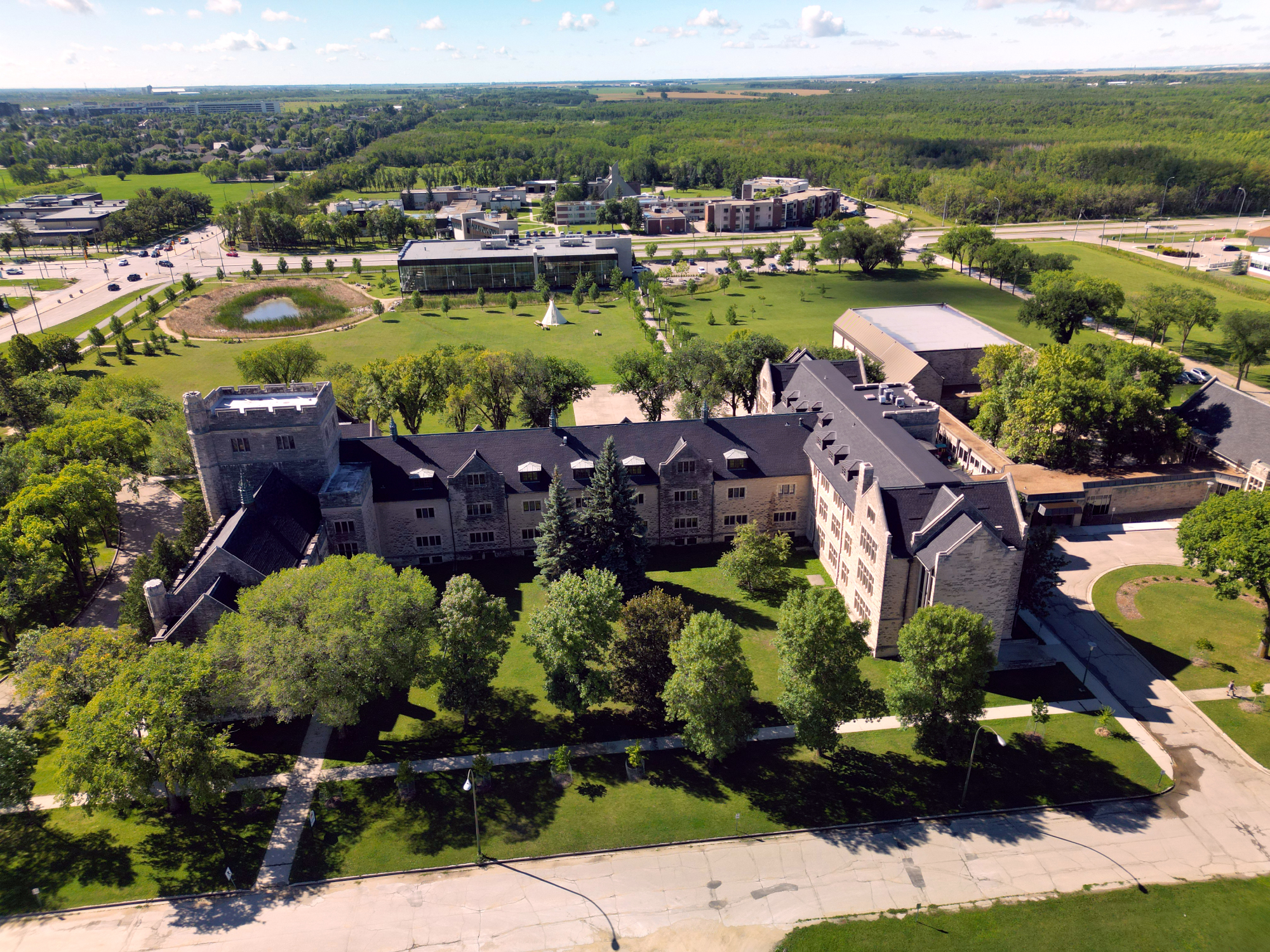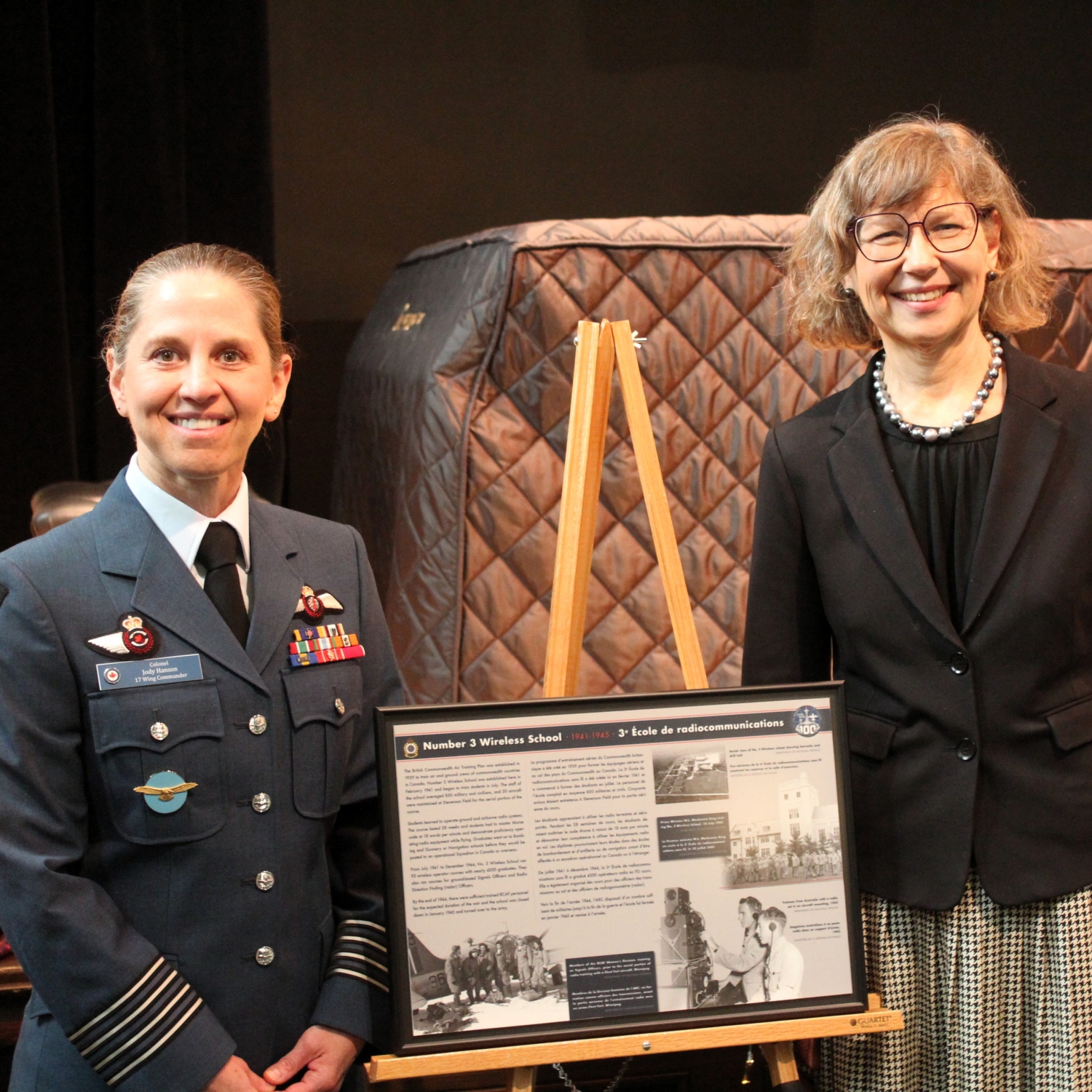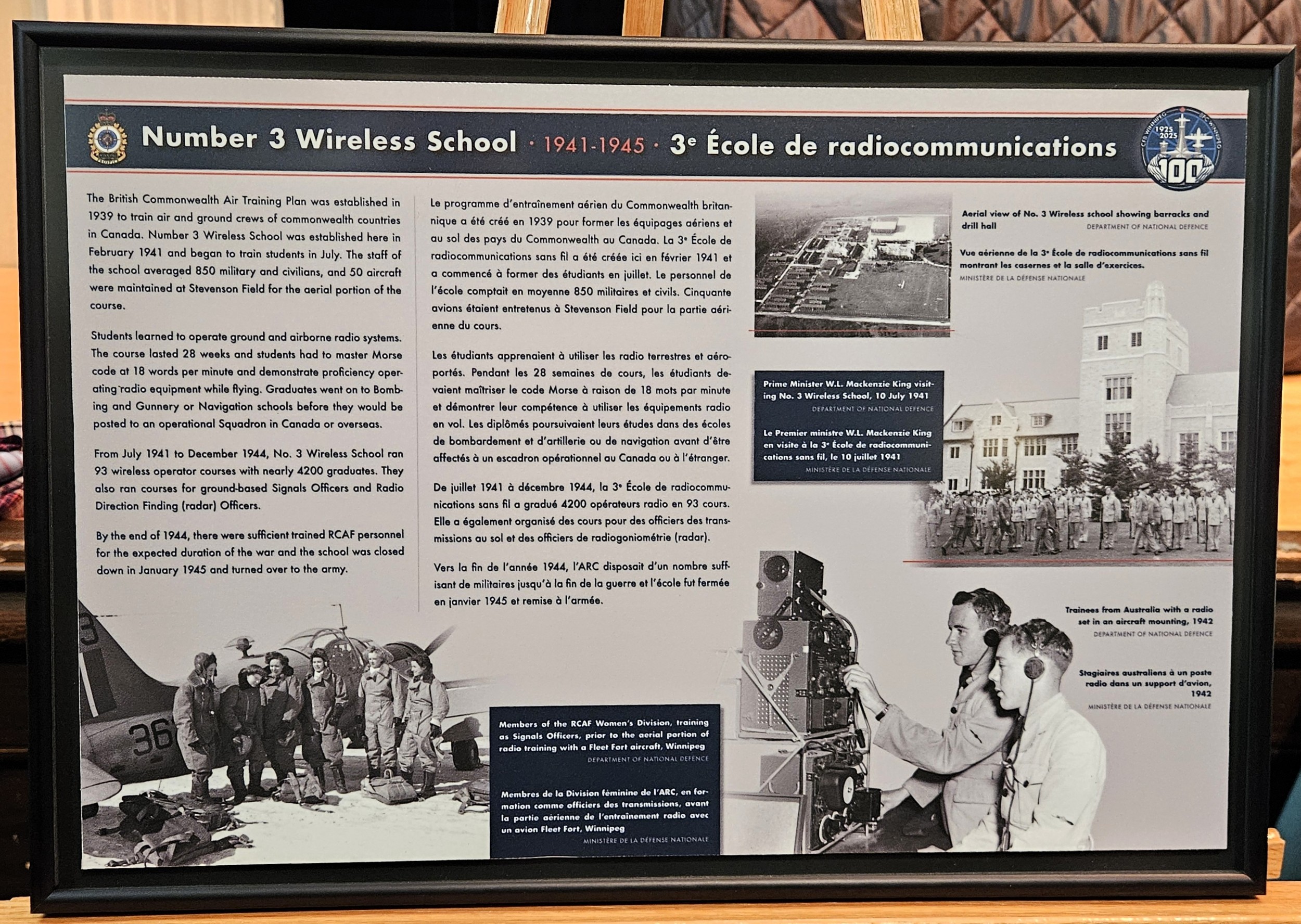News and Releases

Stories
Royal Canadian Air Force commemorates CMU heritage building
Thursday, June 5, 2025 @ 8:50 AM | Stories
 Commander Colonel Jody Hansen of Royal Canadian Air Force 17 Wing with CMU President Cheryl Pauls at the RCAF unveiling of a plaque commemorating the heritage building at 500 Shaftesbury Blvd.
Commander Colonel Jody Hansen of Royal Canadian Air Force 17 Wing with CMU President Cheryl Pauls at the RCAF unveiling of a plaque commemorating the heritage building at 500 Shaftesbury Blvd.
While the Assiniboine Castle on the north side of the CMU campus now hosts academic courses such as "Doing Peace: From Theory to Practice" and "Biblical Perspectives on Peace and Justice," its history reveals that the building served a very different purpose during times of conflict.
During World War II, long before CMU called the building home, the structure was outfitted as No. 3 RCAF Wireless School run by the 17 Wing Royal Canadian Air Force (RCAF).
As this year is the 100th anniversary of the Canadian Forces Base (CFB) Winnipeg, CMU welcomed members of the 17 Wing CFB to install a commemorative plaque signifying the work of the No.3 RCAF Wireless School on the site.
"This is a richly diverse educational heritage, and each way of learning and living on shared space over time enables unusual forms of understanding, kinship, and well-being to emerge," CMU President Cheryl Pauls said at the event.
The history of 500 Shaftesbury Blvd.
Designed by architect John Danley Atchison and built by Carter-Hall-Aldinger in 1921, the Manitoba School for the Deaf was a residential facility for the education of deaf students from across the prairie provinces. Its cornerstone was laid on 9 May 1921 and doors were opened in September 1922.
During World War II, the site was used as part of the Commonwealth Air Training Plan. The No. 3 Wireless School opened by the RCAF in February 1941 to train Wireless Air Gunners and Ground Signal Officers. It closed in December 1944, though the RCAF continued used the site for other purposes until March 1945.
From 1946 to 1965, the building housed the Manitoba Normal School, a teacher training facility. The school, which went by several names including Normal School Annex, Tuxedo Normal School, and Tuxedo Model School, closed in the summer of 1953.
The facility returned to its original purpose, functioning as a residence and school for deaf students from 1966 to 1996. It was used briefly as headquarters for the Pan American Games in 1999 before becoming a part of the CMU campus.
Content: Manitoba Historical Society Archives
A directive under the British Commonwealth Air Training Plan, the wireless school, at that time, hosted 850 military and civilian personnel, 50 aircraft, and produced 4,200 graduates from the program, touching over 5,000 lives during the war.
"CMU's education mandate compels us to look again and ever again at our assumptions on what it means to build and promote peace," said Pauls.
In attendance from 17 Wing CFB were notably Wing Commander Colonel Jody Hansen, Honorary Colonel Stuart Murray, Chief Warrant Officer Philippe Cousineau, and Lieutenant Colonel Genevieve Dussault.
Colonel Hansen stated, "The No. 3 wireless school emerged as a crucial hub for training wireless operators, equipped to handle the electrical demands of radio equipment and accommodate military personnel."
The school's journey began in the early months of 1941 with the construction of temporary barracks and the assembly of instructors. By mid-1941, the school was already fully operational. Students at the school mastered ground and airborne radio and navigational systems and were required to learn Morse code at 18 words a minute over a 28-week course.
"Beyond its military significance, the school fostered a vibrant community spirit," said Colonel Hansen. The drill hall hosted dances and social events with the broader Winnipeg community, and the station even published the monthly W.A.G Mag, which included squadron news and other topical periodicals.
The school closed in December 1944 due to the reduced need for air-proofing Europe. Post-war, the site continued serving military purposes and closed in March 1945.
"This site stands as a symbol of our collective heritage, reminding us of the sacrifices made and the enduring impact of our military community," said Colonel Hansen.
Pauls responded. "...we are grateful for this gesture of friendship and commemoration, and of kinship with all."


 Print This Article
Print This Article